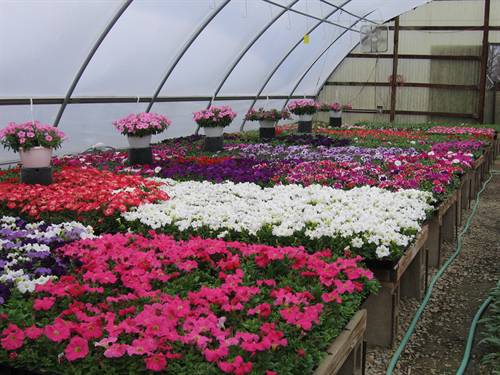Petunias grown in a nursery together with their sibling petunias thrived much better post-separation than did a single petunia grown on its own. This conclusion jives with numerous studies which show that puppies kept with their litter-mates for at least 8 weeks develop better than puppies separated from their siblings soon after birth, and also fits with accumulating evidence showing the importance to human development of keeping a baby in physical contact with people, rather than isolating a baby in a crib.
Seeds of Petunia hybrida were germinated in two
different environments. In the green house termed “Petunia Patch”, the seeds
were sown 5 cm from each other.
In the second green house termed “Onion Patch”, individual petunias were planted at least 50 m from each other. 5, 10, 20 and 45 days post-germination, individual plants from the Petunia Patch were transplanted to the Onion Patch. Control plants remained in each plot from germination until the end of the experiment. Each plot received the same watering and fertilizer regimen. Growth parameters (germination rate, height, leaf number, flowering time, flower diameter, seed set) were gathered daily over a two-month period.
 |
| Petunias in the "Petunia Patch" |
In the second green house termed “Onion Patch”, individual petunias were planted at least 50 m from each other. 5, 10, 20 and 45 days post-germination, individual plants from the Petunia Patch were transplanted to the Onion Patch. Control plants remained in each plot from germination until the end of the experiment. Each plot received the same watering and fertilizer regimen. Growth parameters (germination rate, height, leaf number, flowering time, flower diameter, seed set) were gathered daily over a two-month period.
These results have implications for home gardeners who are
asked to purchase neighboring petunias in their local nursery so as to lessen
the separation stress of plants upon leaving the nursery.
